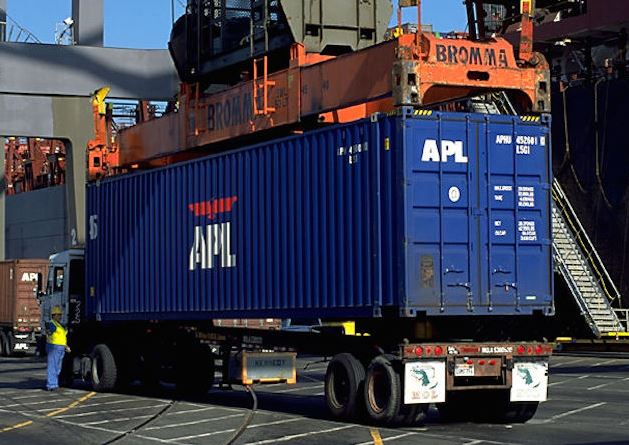Port of LA Notches Big Emission Reduction Gains
Findings from its 10th consecutive year of tracking air pollution show the Port of Los Angeles has set new records for cutting harmful emissions from port-related sources, with diesel particulate matter (DPM) down 85 percent and sulfur oxides (SOx) bordering on total elimination, having plummeted 97 percent since 2005.
The data also shows the Port has surpassed its 2014 emission reduction goals set in 2010 for DPM, SOx and nitrogen oxides (NOx). Released today, the Port’s 2014 Inventory of Air Emissions reports NOx emissions are down 52 percent.
The percentage fell slightly from the Port’s best year for NOx reduction – 57 percent in 2013 – largely due to congestion experienced at all West Coast ports during fall 2014. Noted Los Angeles Mayor Eric Garcetti, “Our aggressive clean air program at the Port shows that we can grow our economy while reducing pollutants up to 97%. Overall, the business of moving cargo through America’s no. 1 container port is cleaner than ever, and that directly improves the quality of life for families across Southern California.”
“Our strategies for operating a sustainable port withstood the cargo congestion challenges we faced in late 2014,” said Port Executive Director Gene Seroka. “With the ongoing investments in clean technology made by the Los Angeles Harbor Department, our customers and supply chain stakeholders, we are committed to forge ahead with measures that protect these gains and continue to reduce emissions.”
The detailed inventory measures emissions of key pollutants from ships, trucks, locomotives, cargo handling equipment and small harbor craft. Much of the progress in 2014 is attributable to vessel emission reduction measures. Leading programs include plugging into shore power under the state’s at-berth regulation, which took effect Jan. 1, 2014.
At least half of most container, refrigerated and cruise ships calling at California’s six largest ports are now required to run their auxiliary engines on shore-based electricity, which eliminates virtually all emissions while a vessel is at berth. Also in 2014, the state required vessels entering California waters to switch to the cleanest available marine fuel.
Category: Commercial













